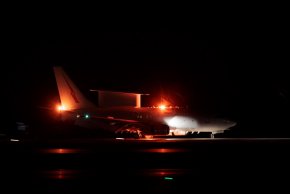It seems like just about every man and his dog is building combat drones at the moment. They really aren't that hard to build. Even the electronic brain that goes into them needn't be any more complex than your average mobile phone.I would concur. I am sure the current version of the Ghost Bat (and for that matter the Ghost Shark) will not be the eventual matured AI technology that is then produced in larger numbers. The AI and the incountry build capability are the crown jewels.
Both are currently limited to surveilance functions, however the Government itself stated we will see an armed AI platform this year.
Ghost Bat/Shark may not be the actual platforms that get weapons, maybe it's a derivation or a new platform that uses the technology explored with these two, as you say Hauritz.
In regards to US involvement, given that AUKUS pillar 2 includes AI, one would view that the outcomes will be shared regardless of US investment or not. So Boeing do possibly get a back door access to the US program, through Ghost Bat if they do it well. I read that there are benefits to an Australian led v US led innovation style project with Ghost Shark (less red tape), so perhaps it helps to keep Ghost Bat as Australian.
Having said that, how much of a stretch would it be to develop an enlarged Ghost Bat with an internal weapons bay for say a couple of LRASMs. It would be a useful option to send a pack of them into harms way to launch a stand off attack against a heavily defended enemy fleet. Or alternatively a stretched shark with torpedos. Perhaps both.
I'm more familiar with Naval systems rather than aircraft, and I'm a bit old school for AI in general, so I'm somewhat of a novice in this area. But I would be interested in others views as to how far off something like this really is. Could we see a gen 2 Ghost Bat with an attack capability this year. I've read that more are being built, however the spec is vague, just that they would be updated versions of the existing ones.
I read the article talking about the USAF's efforts converting an F16 into an AI craft that can aparently do basic dog fighting. If that's the current cutting edge, then an independent AI mini stealth bomber doesn't seem that far fetched.
Recently we saw Iran send several hundred drones into Israel. Israel the US and its allies publicly boasted that they successfully shot down 99% of them. I have no doubt that they did. However the reality is that Israel and its allies expended hundreds of millions of dollars worth of very expensive weapons to shoot down what I expect were mostly cheap unarmed drones. We are seeing the same thing on a dailly basis in the Russian Ukraine war with Ukraine exhausting their air defence missiles against relatively cheap drones. We are seeing the same thing from the other side as well with Ukraine launching drone strikes deep inside Russian territory hitting refineries and other infrastructure.
This is why I believe the most important thing isn't the drones themselves. Any stockpile of drones you have will be quickly expended during any shooting war. What is important is your ability to mass produce them. Things like the flatpack cardboard drones might actually turn out to be more effective than more sophisticated and expensive Ghost Bats. Cheap drones will make us have to completely rethink how we will fight wars in the future.





